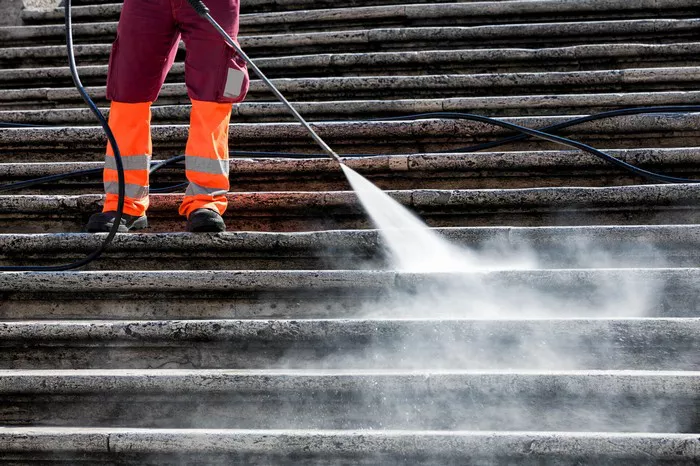Because of their effectiveness in cleaning a wide range of surfaces, pressure washers have become essential tools in many households and companies. The water usage of your pressure washer is an important consideration, whether you’re cleaning cars, removing tough dirt from concrete surfaces, or getting ready to paint. We go into the details of a 2000 PSI pressure washer’s water consumption in this in-depth tutorial to help you understand its patterns and successfully optimize its use.
What Determines Water Consumption?
Before delving into the water usage of a 2000 PSI pressure washer, it’s essential to understand the factors that influence water consumption:
1. Pressure Rating: The pressure rating, measured in pounds per square inch (PSI), indicates the force with which water is expelled from the nozzle. Higher PSI typically results in more efficient cleaning but may also lead to increased water consumption.
2. Flow Rate: Flow rate, often measured in gallons per minute (GPM), denotes the volume of water delivered by the pressure washer. A higher flow rate results in faster cleaning but also consumes more water.
3. Nozzle Size and Type: The size and type of nozzle used significantly impact water consumption. Different nozzles produce varying spray patterns and affect the efficiency of cleaning.
4. Surface Type and Condition: The surface being cleaned plays a role in determining water consumption. Porous surfaces may require more water to penetrate and remove dirt effectively.
5. Cleaning Technique: The technique employed while using the pressure washer influences water consumption. Proper distance, angle, and movement can optimize cleaning efficiency and reduce water wastage.
Water Usage of a 2000 PSI Pressure Washer
A 2000 PSI pressure washer is a popular choice for both residential and commercial applications due to its versatility and moderate power. When it comes to water consumption, several factors come into play:
1. Flow Rate: Typically, a 2000 PSI pressure washer has a flow rate ranging from 1.5 to 2.5 GPM. The exact flow rate may vary depending on the model and manufacturer specifications.
2. Water Efficiency: Compared to higher PSI models, a 2000 PSI pressure washer tends to be more water-efficient while still delivering sufficient cleaning power for most tasks. However, the actual water usage will depend on the specific conditions of the job.
3. Cleaning Surface: The type and condition of the surface being cleaned influence water consumption. Smooth surfaces may require less water compared to rough or textured surfaces that trap dirt more stubbornly.
4. Nozzle Selection: Choosing the appropriate nozzle for the task at hand is crucial for optimizing water usage. Different nozzle sizes and types produce varying spray patterns, allowing for precise control over water flow and coverage.
5. Technique and Strategy: Adopting efficient cleaning techniques can help minimize water wastage. Avoiding unnecessary overlapping passes, maintaining an optimal distance from the surface, and adjusting the spray pattern as needed can all contribute to conserving water.
Tips for Optimizing Water Usage
To make the most of your 2000 PSI pressure washer while conserving water, consider the following tips:
1. Select the Right Nozzle: Use the nozzle that best suits the cleaning task to ensure efficient water usage. Start with a wider spray pattern for large areas and switch to a narrower pattern for stubborn stains that require more concentrated cleaning power.
2. Pre-Treat Surfaces: Pre-treating surfaces with cleaning solutions or detergents can help loosen dirt and grime, reducing the amount of water needed during pressure washing.
3. Avoid Excessive Pressure: While it may be tempting to crank up the pressure for faster cleaning, excessive PSI can lead to unnecessary water consumption and potential damage to surfaces. Use the minimum pressure necessary to achieve satisfactory results.
4. Maintain Optimal Distance: Maintain a consistent distance between the pressure washer nozzle and the cleaning surface to ensure thorough cleaning without wasteful overspray.
5.Use Trigger Control: Many pressure washers feature trigger controls that allow you to pause the flow of water when not in use. Utilize this feature to minimize water usage during breaks or when moving between different areas.
6. Plan Your Approach: Before starting a cleaning project, assess the area and plan your approach to minimize unnecessary water usage. Focus on one section at a time, moving systematically to avoid overlapping and rework.
7. Regular Maintenance: Keep your pressure washer well-maintained by cleaning filters, inspecting hoses for leaks, and ensuring proper nozzle function. A well-maintained machine operates more efficiently, reducing water consumption.
Conclusion
Comprehending the water use of a pressure washer with a 2000 PSI is imperative for proficient and successful cleaning tasks. You may maximize water use and get good results by taking into account variables like flow rate, surface type, and cleaning method. By putting this guide’s advice into practice, you may save water while also extending the life of your pressure washer and increasing efficiency. Recall that conserving water helps the environment and your pocketbook.

